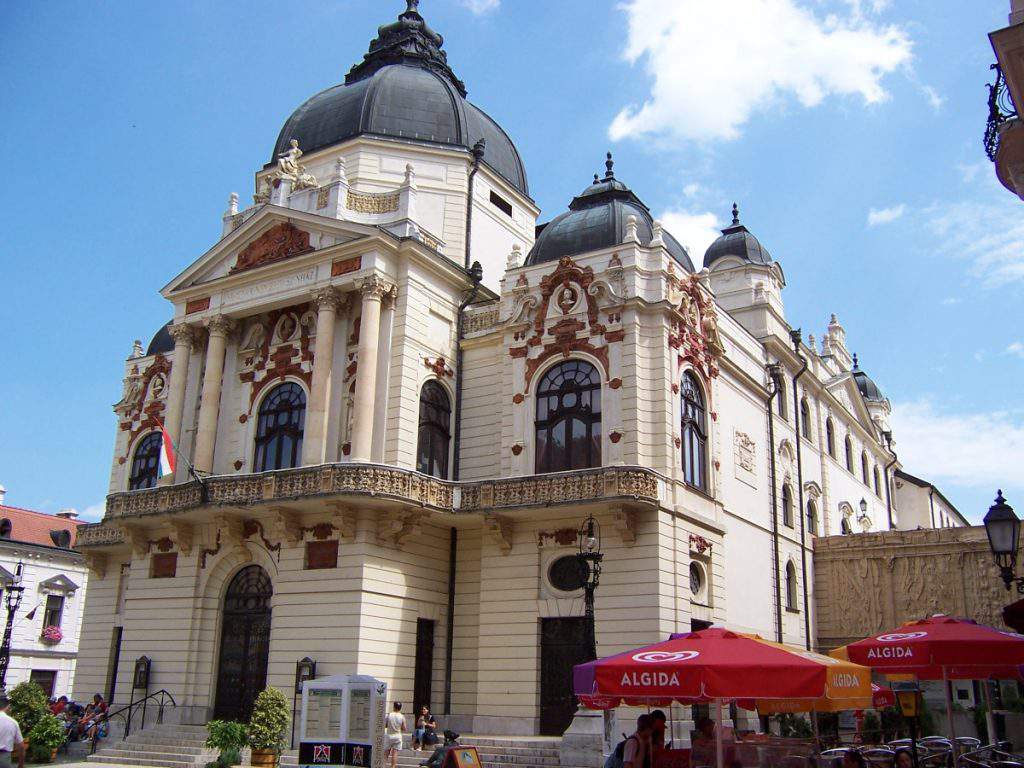15 must-see sights in Hungary PART 1

In the Hungarian countryside there are numerous fascinating landscapes, natural treasures, and small settlements. It is very difficult to choose between them or rank them. The following list of utazom.com is therefore a subjective one, as beauty in itself is subjective. So let us just cherry-pick from the many beauties in this small country.
Hollókő
The only village in Hungary which made it to the UNESCO World Heritage List (1987). It gained its appearance of today in the 17-18th century. It is a Palóc village in Nógrád County showing traits of traditional architecture and the village life before the 20th century, without having become an ‘open-air museum’.

Őrség
Őrség lies in the South-Western corner of Vas county, on the Western border of Hungary. It is primarily a natural and ethnographical region, a land rich in cultural and sacral values. It is characterised by a complex settlement structure, the building material used for the houses was mainly wood. Hegyhátszentjakab and Szalafő are among the most beautiful villages in the area. Churches from the early Middle Ages, belfries, an ethnographic museum and other exciting programs await visitors here.

Villány wine region
One of the most developed wine-producing areas of our country lies in the Southern part of Hungary, on 2100 hectares. It is the hottest, sunniest wine region in our country, with long, dry summers and growing season. The region was formed around two towns:
Villány is famous for its fiery red wine, Siklós for the white wine.
Villány was given the honourable Grape and Wine City award in 1987 by an international jury. The Tokaj wine region is a beautiful land too, which has been protected by the UNESCO World Heritage since 2002.

Esztergom
Located in the Danube Bend, Esztergom is a truly picturesque city, with the Basilica crowning the view. The headquarters of the Archbishop in Esztergom became the centre of the Roman Catholic Church in Hungary (the Hungarian kings were always crowned by the archbishop of Esztergom, but in Székesfehérvár). It has a prominent ecclesiastical collection, and until 1242, during the Tartar invasions, it was one of the capital cities besides Székesfehérvár. Besides the Basilica, the medieval castle, the Primate Palace, its historic centre, the Old Seminary, the Dark Gate, and the Watermill’s memories of the Turkish Empire should also be mentioned.

Sopron
Civitas Fidelissima, that is, the most faithful city: Sopron. The city near the western Austrian border, in the vote after the Trianon peace treaty in 1921, about which country it wants to belong to, chose Hungary. This historical Baroque town boasts countless historical and architectural sights, such as the city centre, the Fire Tower, the Capitol Hall in the monastery, the Storno House (also inhabited by Ferenc Liszt), the Fabricius House, the House of Two Moors, the Gambrinus House, or the Pharmacy Museum, to name only the most famous ones. Of course, the atmosphere of Sopron deserves to be mentioned in itself.

Tihany and the Tihany peninsula
One of Hungary’s most picturesque settlements: the village of the Tihany Peninsula stretching to Lake Balaton abounds in spectacular cultural, landscape, and natural endowments. Here lies the Tihany Abbey, established in the 11st century, the Külső-tó and the Belső-tó, the most famous lavender plantation of Hungary, Óvár, with the burial mounds, and the Hermit sites (Greek Orthodox hermits lived here between the 11-14th centuries), skanzen, Calvary, and in a quiet, clear winter time, echo can still be heard, but there are several geological attractions (caldera, geyser).

Pécs
The 5th biggest city in the country, Pécs can be found near the Southern border. The landmarks and atmosphere of the city are determined by its long and colourful history. Its Old Catholic catacombs, which are on the UNESCO World Heritage list, were built in the late Roman era, The Gazi Kasim Pasha, the Jakovali Hassan and Ferhat Pasha mosques, the Idris Baba’s Tomb in the Turkish era. But it is also worth visiting the Cathedral of Pécs, the Episcopal Palace, the Széchenyi Square, the Museum Street Collections and the Zsolnay Cultural Quarter. Pécs is an excellent destination for hiking as well, as it lies beside the beautiful mountain Mecsek.

Fertő tó
Fertő-tó, located between Austria and Hungary is the largest endorheic lake in Central Europe. The lake and its surrounding Fertő-landscape have been listed on the UNESCO World Heritage List since 2001 (the Fertő-Hanság National Park in Hungary, and the Neusiedler See – Seewinkel National Park in Austria). Its medicinal effect is attributed to its high salt content. Its range varies constantly, it dries out in every 100-120 years, but it had once swollen to the size of Lake Balaton. Herons, egrets, ducks, geese and other wading birds nest here. There are also plenty of cultural attractions around Fertő tó.

The list is continued here
Featured Image: Wikicommons by Gábor Bejó
Source: utazom.com





